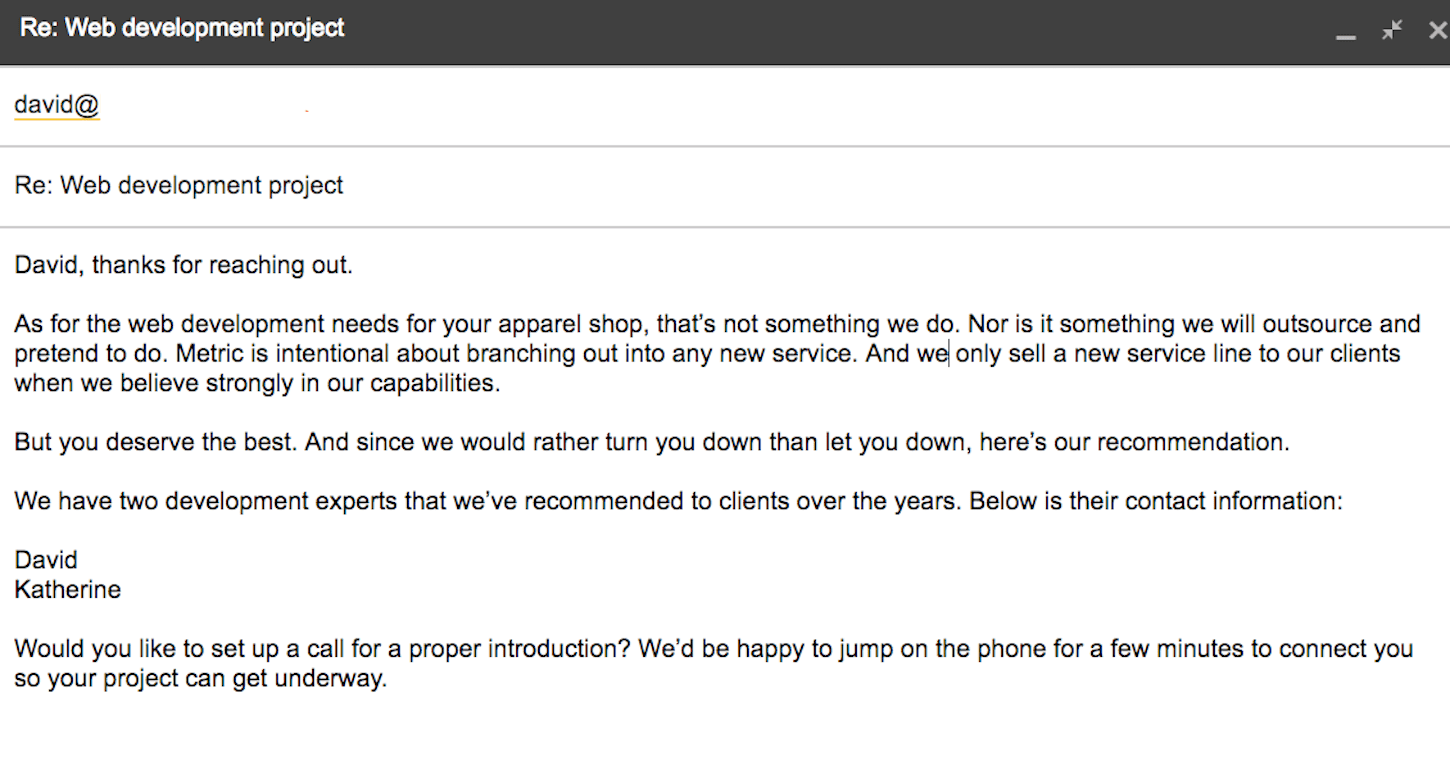Something is broken in the marketing world.
Restricted client account access. Unethical spending. Wrong keyword bidding. Incorrect ad placement. Miserable clients. Phony guarantees. Embarrassing client service. Terrible agency relationships. Millions of dollars wasted. Entrapping contracts.
How did we end up here?
We know this is a real problem. We've been in the digital marketing business since digital marketing has even been a business, and ‘truth in advertising’ has never been more relevant to you as a service provider , as well as to your clients.
, as well as to your clients.
This is particularly true in the retail space. Whether you’re an agency, vendor, entrepreneur, or freelancer, if you want to build long term value, you should be radically transparent with your clients.
Today we’re going to unpack several actionable strategies that our agency implements to keep our work radically transparent. Since 2013, we’ve found that in long run, this approach actually nets higher quality, sustainable client relationships. And we believe it will achieve the same results for you.
Read on for three strategies to build transparency in your own business.
You might also like: Five Steps to Successful Client Management.
1. Lead with experiential, triangulate with connection
Thinking about making a short-term dollar, lots of agencies or vendors will say yes to certain client proposals, regardless of whether they truly have those capabilities in house.
This is especially harmful in the paid performance advertising world. If you have someone inexperienced running your paid marketing, you can lose lots of money, quickly. Tom Fishburne’s cartoon says it best.
The same applies to the design and dev world. Today’s ecommerce brands hire agencies and vendors because they have experiential knowledge —they don’t just talk a good game. Instead, they have sound judgment, relevant insight, and meaningful perspective. As such, your challenge is to focus on what you’ve done, not what you can do. This is where transparency can become your differentiator.
—they don’t just talk a good game. Instead, they have sound judgment, relevant insight, and meaningful perspective. As such, your challenge is to focus on what you’ve done, not what you can do. This is where transparency can become your differentiator.
Let’s say a prospective client reaches out to you to inquire about working together. Their company is in desperate need of email marketing and brand design services. But you only offer the latter.
How will you respond? Will you act from a place of greed and urgency, bundle the two services together as a package, and teach yourself email marketing on the fly, just to win the sale? Or will you be transparent about your company’s capabilities?
Our agency is often approached to execute services in which we don’t have expertise. And the vast majority of the time, we say something like what you see below. Here’s an email template you might use as inspiration for your own transparency in client or prospect communications:

This referral call accomplishes several things. First, it creates value for the client by saying no, but still helps their project move forward. Secondly, it triangulates transparency in the client’s eyes, which upholds our deeply held company values.
Lastly, it positions us as a resource and trusted advisor. This has long term brand value and might result in future work down the road from the same client who has needs which fit our capabilities at another time.
2. Assure access and ownership of ad accounts
Everything in a client relationship builds off a foundational exchange of trust. If you want the project will begin on a transparent foot, build it in from day one. Just know this: Once that trust is violated, it’s tough to come back.
Two examples come to mind.
This past year, the marketing director from a major consumer brand told us that they had no idea their advertising accounts were being run so poorly until they finally got access to it. But once they finally logged in, they learned that the account was not only tracking wrong events, but the marketing agency also hadn’t made a Facebook custom audience in twelve months. That’s when the brand knew they had been getting screwed for years.
Ouch!
More recently, during an audit, a new client literally slapped their forehead on the other end of the line. We took a look at their Adwords account and discovered that a huge percentage of their spend was going to keywords for the most low revenue, low margin item in their catalog, which was a phone case. And performance was horrible. Their previous agency wasn’t even monitoring their accounts closely.
These stories are horrifying to us. We see far too many agencies who won't even give their clients access to their Facebook and Adwords account. It's an unethical way to retain clients, by putting up walls and hiding what they're doing, and it is completely short sighted. Seb Joseph from Digiday wrote a popular article about the tectonic shift of marketing agencies for more information on this topic.
And it’s not just about paid social, either. This is about any type of reporting mechanism between vendor and client in a service relationship. This is, in our opinion, a bigger deal than fraud and leads to more money being wasted. And this lack of transparency being seen as a source of margin for companies and agencies is deeply unethical. Brands should not only have access to their accounts—they should own them .
.
What’s your policy on access and ownership for your clients? Are you cagey about turning over assets, data and other information to clients, or are you willing to open the books and build a foundation of trust in the relationship?
Remember, when it comes to transparency between clients and vendors, it’s not only about what’s being done, but what’s not being done.
You might also like: The Toughest Client Questions and How to Answer Them.
3. Retain clients by adding value, demonstrate it with transparent data

Earlier this year, Cambridge Analytica most notably gained access to 50 million Facebook users. What’s more, Experian and Acxiom demonstrated subpar data practices and contributed to giving digital marketing a bad name.
These stories are scaring ecommerce brands. Because when it comes to reporting and attribution, brands all want to assure their dealings with third party agencies and vendors are legal and trustworthy.
As they should. Many ecommerce companies are run by entrepreneurs, and their company is their baby. As a designer and developer, you can relate to that, right?
All the more reason to communicate data transparency to your clients every step of the way. Here’s one strategy we’ve found to be particularly useful with clients, and has helped our agency carve out a unique niche on the back of that value.
Too many shady agencies have client dashboards that are hidden or obfuscated. When it comes to data, they make sure clients see what they want clients to see. They preserve a tidy client narrative that only shows the upside.
Now, for years, we used to do our client performance reporting manually. We would scramble last minute before a client meeting and finally update numbers, and then present to the client.
But then we realized we could save a ton of time by building spreadsheet formulas to auto populate our data in real time, from all the many sources, every fifteen minutes.
As a result, we created a simple, clean, organized, even playful dashboard that clients love, and it has now become a proprietary asset for our company. All because it adds value, instead of puts up walls.
What’s your version of real time, transparent reporting? How could you make design or dev program updates, iterations, and other project milestones more accessible and expedient for your clients?
You might also like: 4 Quick Ways to Build Trust With a New Client.
Be transparent to stand out
In conclusion, let’s consider the phrase that service providers hear far too often:
“I hated my last agency.”
You might have heard this before. We certainly hear it a lot. But it’s only because merchants know something is broken in the marketing world. And if you want your firm to stand out as the top designer or developer of choice, we highly recommend differentiating on the value proposition nobody expects: the truth.
Radical transparency has completely transformed our agency’s business, and we’re confident that it can do the same for yours.








